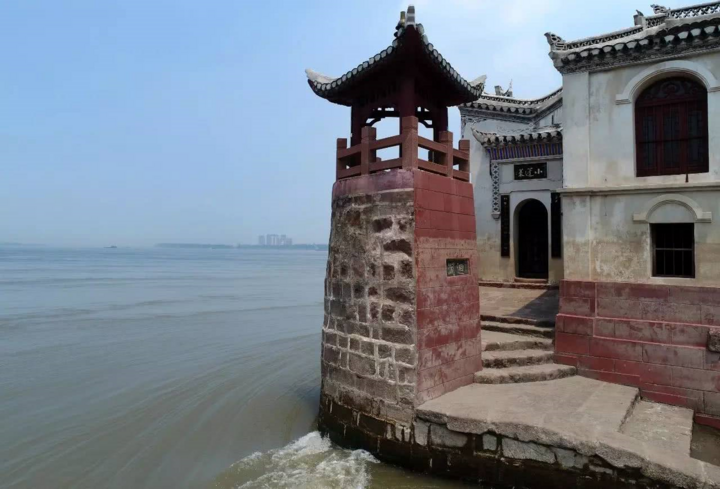The Mysterious Ancient Temple Standing Strong in the Longest River in China








The Quan Âm Các, also known as the Long Bàn Temple, is a ancient temple located in the middle of the Yangtze River in Ngạc Châu City, Hubei Province, China. It is considered one of the most solid structures in China, as it has stood firm in the rushing waters of the country’s longest river for over 700 years.
According to historical records, the predecessor of Quan Âm Các was a Buddhist temple built in the Song Dynasty and was first renovated during the fifth year of the Yuan Dynasty (1345). The temple was completely destroyed during the Ming Dynasty in the sixth year of the Gia Tĩnh period (1527), but was later rebuilt to a larger scale by Huá ShíKāng, the county commander, with the addition of the Quan Âm Shrine and Thuan Duong Tower. The temple underwent further renovations and reinforcements during the third year of the Qing Dynasty (1864) and has stood the test of time until today.
The temple covers an area of 300 square meters with a length of 24 meters, a width of 10 meters, and a height of 14 meters. It consists of two main floors with multiple small windows painted in white and a roof covered in moss.
One of the unique features of Quan Âm Các is its strong foundation, known as the Long Bàn stone foundation. In front of the temple, there is a curved protective wall. The shape of the curved wall regulates the flow of water and reduces the water pressure, which allows the architecture behind the wall to withstand much less force.
Despite facing numerous devastating floods, the temple has remained steadfast throughout the centuries. Notably, it withstood the catastrophic flood in 1998 and the flood in 1954, which claimed the lives of approximately 30,000 and 100,000 people, respectively.
During the peak of the flooding season, the temple is submerged in water, with only the upper windows visible. It is only during the dry season when the water level is low that the entire temple emerges and stands tall in the middle of the river.
In 2006, Quan Âm Các was declared a national cultural heritage site of China. However, due to its unique location, the temple is not open to visitors. Nonetheless, many people still make the journey to admire this extraordinary architectural marvel.
Source: Business Today

